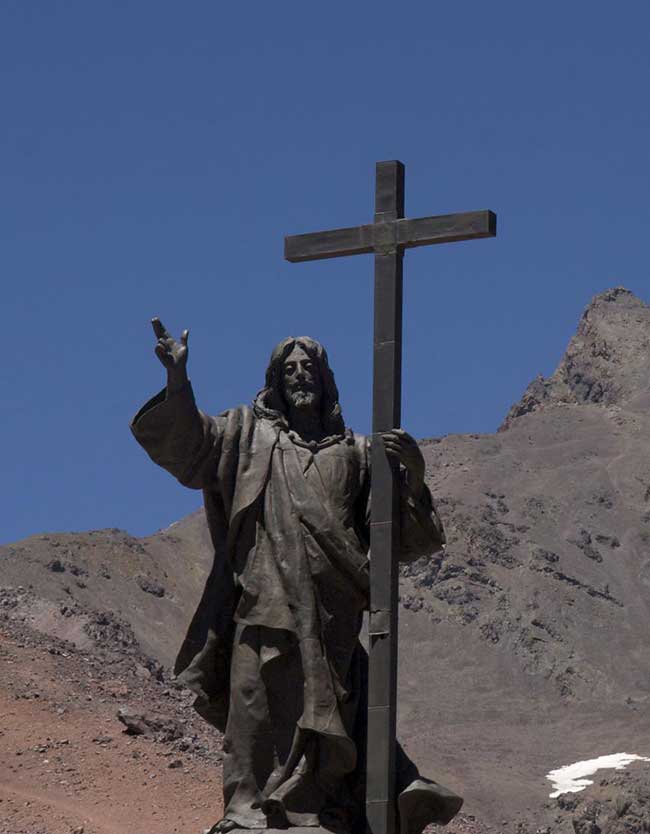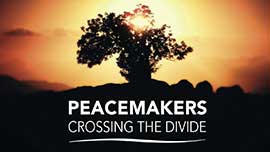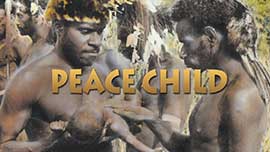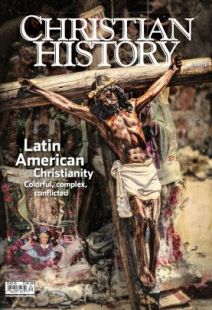CHRIST OF THE ANDES STANDS FOR PEACE

[Above: Lisa de Vreede, Christ the Redeemer of the Andes (on the border with Chile and Argentina) Flickr https://flickr.com/photos/ldevreeede/4372273425 License: CC-BY-NC-ND/2.0]
On this day, 13 March 1904, hundreds of Argentinians and Chileans met two and a half miles above sea level at their nations’ border in the Andes. They were gathered for a ceremony both solemn and joyous. The solemnity was because they were dedicating a bronze figure of Christ, twenty-six feet tall. The joy was because the two nations mingled in peace.
A few years earlier they had been about to exchange bullets because of disagreement over the border. Approximately eighty thousand square miles were in dispute. Both countries poured money into battleships, cannons, and other armaments. But British ambassadors in Chile and in Argentina appealed to the would-be combatants to seek a peaceful resolution. Bishops Marcolino Benavente of Argentina, and Ramon Angel Jara of Chile, supported the British call for peace. They were inspired by encyclicals of Pope Leo XIII that called for peace among nations and for devotion to Christ the Redeemer. The two bishops canvassed their nations, speaking at gatherings of people. Letter-writing campaigns to their respective legislatures bore fruit and the belligerents signed an agreement to pursue arbitration.
Headed by Sir Thomas Holdiech, the arbiters studied old documents and land grants. They surveyed the rugged terrain, producing a settlement that each side found acceptable. Argentina and Chile ceased war preparations and divested themselves of their accumulated armaments.
Years earlier, Monsignor Benavente had taken up a suggestion by Señora Angela de Oliveira Cézar de Costa that a statue be erected once peace was achieved. It would remind all people of Christ’s words, “And I, if I be lifted up from the earth, will draw all men unto me.” Led by Cézar, the people of both countries enthusiastically subscribed to the memorial. Argentine sculptor Mateo Alonso cast the tall figure of Christ (supposedly from unused cannons). Soldiers worked with teams of mules and with their own muscles to drag the symbol of peace to its permanent station and to mount it on a twenty-two-foot pedestal of native stone.
Christ lifts his right hand in benediction, and his left hand holds a cross. One of the plaques at the base says, “He is our peace who hath made us one.” Another plaque, added in 1937, reads: “Sooner shall these mountains crumble into dust than Argentines and Chileans break the peace sworn at the feet of Christ the Redeemer.”
The peace has remained intact for over one hundred years. It seems to be the first recorded instance that a boundary line between two countries was settled through arbitration. Although men downplayed Angela de Oliveira Cézar’s role, she insisted on the credit she deserved. She became a founder of the South American Association for Universal Peace and was nominated for the Nobel Peace Prize in 1911.
—Dan Graves
_ _ _ _ _
For more about Christ as the source of true peace, watch Peacemakers: crossing the divide and Peace Child at RedeemTV.
For more about Christianity in South America, see Christian History #130 Latin American Christianity: Colorful, complex, conflicted
PeaceMakers: Crossing the Divide and Peace Child can be purchased from Vision Video.









